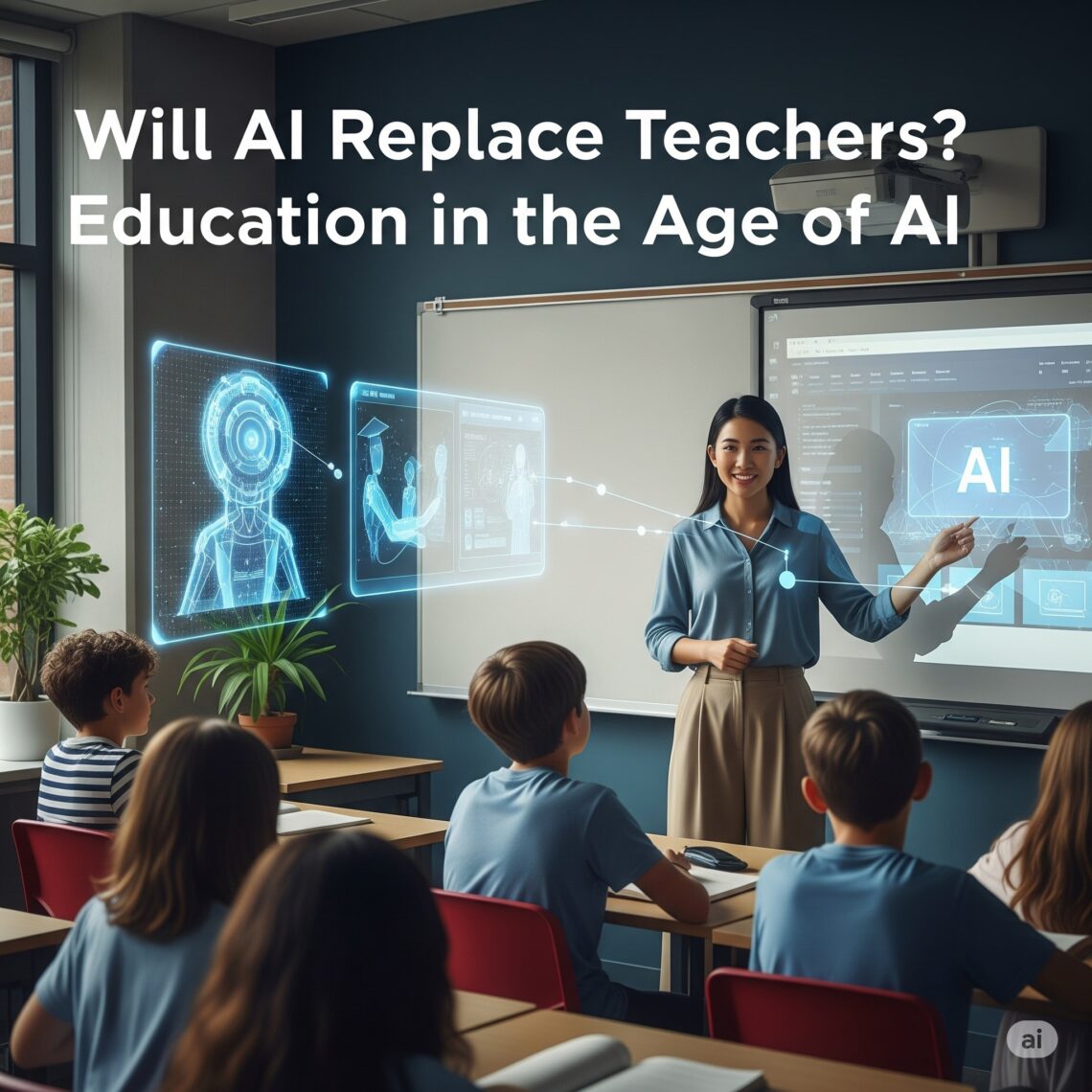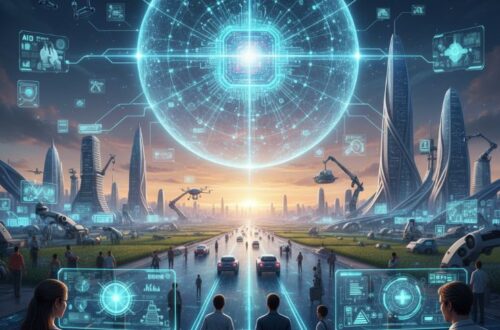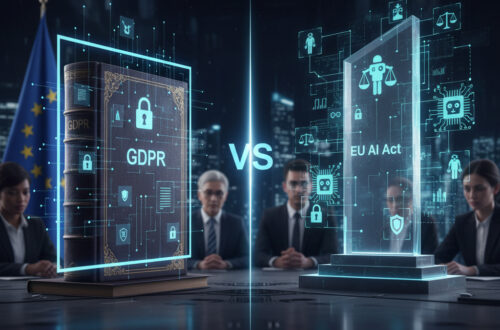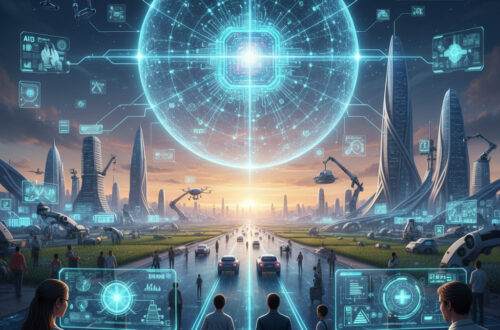The rapid ascent of Artificial Intelligence (AI) has sparked transformative discussions across industries, and education is no exception. With the emergence of sophisticated AI tutors, intelligent chatbots, and personalized learning platforms, a provocative question has taken center stage: Will AI replace human teachers? While AI’s role in modern education is undeniably expanding, offering unprecedented opportunities for personalized learning and administrative efficiency, a deeper look reveals that AI is evolving not as a replacement for human educators, but as a powerful, complementary tool designed to enhance their capabilities and redefine the teaching profession itself. Recent innovations, such as Khanmigo (Khan Academy’s AI-powered tutor built with OpenAI technology) and advanced features in language learning apps like Duolingo AI, illustrate this shifting dynamic.
Current Use of AI in Education
AI is already actively integrated into various facets of the educational landscape, primarily serving as a supplementary tool:
- Personalized learning platforms: AI algorithms analyze student progress, identify learning styles, and adapt curriculum pace and content in real-time. This ensures that each student receives material tailored to their individual needs, rather than a generic, one-size-fits-all approach.
- Tutoring and homework assistance: Tools like ChatGPT, Claude, and Khanmigo provide students with immediate answers, explanations, and step-by-step guidance, acting as virtual tutors available 24/7. They can clarify concepts, solve problems, and offer practice exercises.
- Automated grading and feedback: AI excels at grading objective assessments like multiple-choice questions, fill-in-the-blanks, and even basic coding assignments. More advanced AI can provide initial feedback on short responses, freeing up teachers’ time for more complex, qualitative assessment.
- Language learning apps: Platforms like Duolingo Max, which integrates GPT-4, use AI to provide personalized practice, real-time feedback on pronunciation and grammar, and conversational AI partners, significantly accelerating language acquisition.
- Administrative tasks: AI-powered systems are increasingly helping educational institutions manage non-instructional duties, such as optimizing class scheduling, tracking attendance, automating communications with parents, and managing student enrollment data.
⚠️ Note: It’s crucial to understand that in its current state, AI functions as a supplementary tool in education, designed to assist and augment learning, rather than serving as a full replacement for the multifaceted role of human educators.
What AI Can Do Well in Education
AI possesses several strengths that make it highly effective in specific educational contexts:
- Adaptive learning: AI’s core strength lies in its ability to analyze vast amounts of student data and dynamically adjust the learning path, content difficulty, and instructional strategies to match each student’s evolving needs and pace.
- 24/7 availability: AI tutors and learning platforms are available around the clock, providing instant support and feedback whenever students need it, irrespective of traditional school hours.
- Handling large-scale learning data: AI can process and derive insights from enormous datasets of student performance, engagement, and learning patterns, identifying trends and areas for improvement that would be impossible for human analysis alone.
- Supporting neurodiverse or special needs students: AI can deliver highly personalized content and utilize diverse formats (e.g., text-to-speech, visual aids) that cater to specific learning differences, providing consistent, patient support.
- Assisting in test prep and revision: AI can generate endless practice questions, identify weak areas based on previous performance, and create customized revision schedules, making test preparation highly efficient.
Limitations of AI in Replacing Teachers
Despite its capabilities, AI faces significant limitations when it comes to replicating the holistic role of a human teacher:
- Lack of empathy, human connection, and emotional intelligence: AI cannot understand or respond to a student’s emotional state, a frustrated expression, or the deeper reasons behind a learning struggle. Building rapport, trust, and providing emotional support are uniquely human attributes.
- Difficulty in managing classroom behavior or interpersonal issues: AI cannot mediate conflicts between students, inspire group collaboration, or manage the complex dynamics of a physical or virtual classroom environment.
- Cannot ethically guide or mentor students in the same way: Teachers are crucial for instilling values, fostering social skills, and providing moral guidance—areas where AI lacks the capacity for true understanding or lived experience.
- Struggles with nuanced evaluation: While AI can grade objective tests, it struggles with the nuanced evaluation of complex essays, creative projects, critical thinking, and the application of knowledge in real-world, ambiguous contexts.
- Bias or hallucinations in AI-generated content: AI models can sometimes produce biased information if their training data reflects societal prejudices, or they can “hallucinate” facts, presenting false information as truth. This requires human oversight to ensure accuracy and fairness.
Human Teachers: The Irreplaceable Role
The inherent limitations of AI underscore the irreplaceable value of human teachers in education:
- Mentorship and emotional support: Teachers act as mentors, guiding students through personal and academic challenges, celebrating their successes, and providing comfort during difficulties. This emotional bond fosters resilience and a love for learning.
- Ethical development and moral guidance: Teachers help students understand complex ethical dilemmas, develop a moral compass, and learn to navigate societal values, skills that AI cannot impart.
- Encouraging creativity and critical thinking: While AI can generate ideas, human teachers excel at prompting students to think outside the box, challenge assumptions, and engage in original, divergent thought processes that are essential for true innovation.
- Socio-cultural and value-based education: Learning in a classroom is a social experience. Teachers facilitate discussions, promote teamwork, teach conflict resolution, and help students understand diverse socio-cultural contexts, cultivating well-rounded citizens.
- Building student-teacher relationships: The personal connection between a teacher and a student is fundamental to effective learning. It inspires motivation, builds self-esteem, and creates a supportive environment where students feel safe to take risks and grow.
AI as a Teacher’s Assistant, Not a Replacement
The most effective integration of AI in education views it as a powerful assistant, not a substitute, for human teachers. Teachers can leverage AI to:
- Automate grading: Freeing up countless hours by handling objective assessments.
- Prepare lesson plans: AI can quickly generate ideas, outlines, and initial drafts of lesson materials, allowing teachers to customize and refine them.
- Provide remedial instruction: AI can deliver targeted support for students struggling with specific concepts, offering individualized practice and explanations.
- Identify student performance patterns: AI-powered analytics can pinpoint areas where students are collectively struggling or excelling, enabling teachers to adjust their teaching strategies proactively.
- Introduce the idea of “co-teaching” with AI: This paradigm envisions a future where AI handles routine, data-intensive tasks, allowing human teachers to focus on higher-order thinking, emotional development, and truly personalized, high-impact instruction.
- Example: A math teacher uses ChatGPT to create adaptive quizzes for different student levels, allowing them to spend more time working one-on-one with students who need extra help or designing engaging group projects.
Case Studies and Real-World Use
Several examples illustrate the growing synergy between AI and human educators:
- Khan Academy’s Khanmigo: Launched in early 2023, Khanmigo is a GPT-powered AI tutor that assists students with their learning journeys, providing hints and explanations rather than direct answers. Crucially, it also acts as a teacher’s assistant, helping educators with lesson preparation, drafting communications, and providing insights into student progress, embodying the co-teaching model.
- Duolingo Max: Integrating GPT-4, Duolingo Max offers advanced features like “Explain My Answer” and “Roleplay” conversations, giving learners detailed feedback and immersive practice that significantly enhances the human-led lessons.
- Squirrel AI (China): This company operates large-scale AI-only tutoring centers across China, where millions of students interact with adaptive AI systems for personalized learning. While the system focuses on content delivery, the centers still employ human facilitators to manage the learning environment.
- UNESCO’s AI in Education Guidance (2024): In its comprehensive policy guidance, UNESCO strongly emphasizes the need for AI-human collaboration in education, advocating for AI as a tool to enhance learning equity and quality, rather than replacing teachers.
The Risk of Overdependence
While the benefits are clear, several risks necessitate careful consideration:
- Equity issues: The “digital divide” could be exacerbated if not all schools or students have equitable access to AI tools, potentially widening learning disparities.
- Over-reliance on automation: An excessive dependence on AI for core teaching functions could dull teachers’ pedagogical intuition and reduce their capacity for innovative, responsive instruction.
- Concerns over student data privacy and surveillance: The collection of vast amounts of student data by AI systems raises significant ethical questions about privacy, security, and the potential for algorithmic surveillance.
- Deskilling of educators: There is a valid concern that if AI handles too many tasks, teachers might lose opportunities to develop critical skills in areas like qualitative assessment or direct student interaction.
The Future of Education with AI
The future of education will likely feature a sophisticated hybrid model of teaching, where AI supports core learning functions, freeing teachers to focus on inherently human aspects of development:
- AI will manage adaptive content delivery, provide immediate feedback, and analyze student data.
- Teachers will increasingly focus on fostering critical thinking, creativity, emotional intelligence, social skills, and providing personalized mentorship.
- The rise of AI literacy for educators will be crucial, with comprehensive training programs designed to equip teachers with the skills to effectively integrate AI tools responsibly and ethically into their classrooms.
- New teacher roles may emerge, such as AI facilitators, guiding students in interacting with AI tools; curriculum curators, leveraging AI to find and organize learning resources; and learning experience designers, focusing on creating engaging and holistic educational journeys.
Conclusion
In conclusion, the question of whether AI will replace teachers receives a resounding answer: no, AI is transforming education, not replacing teachers. The most successful classrooms of the future will be those that master the delicate yet powerful blend of human empathy and technological intelligence. While AI will continue to evolve and take on more sophisticated tasks, the fundamental role of educators—their ability to inspire, mentor, build relationships, and guide the holistic development of young minds—will remain essential and, indeed, irreplaceable. The teaching profession will evolve, demanding new skills and approaches, but the heart of education will forever beat with the invaluable human touch.





